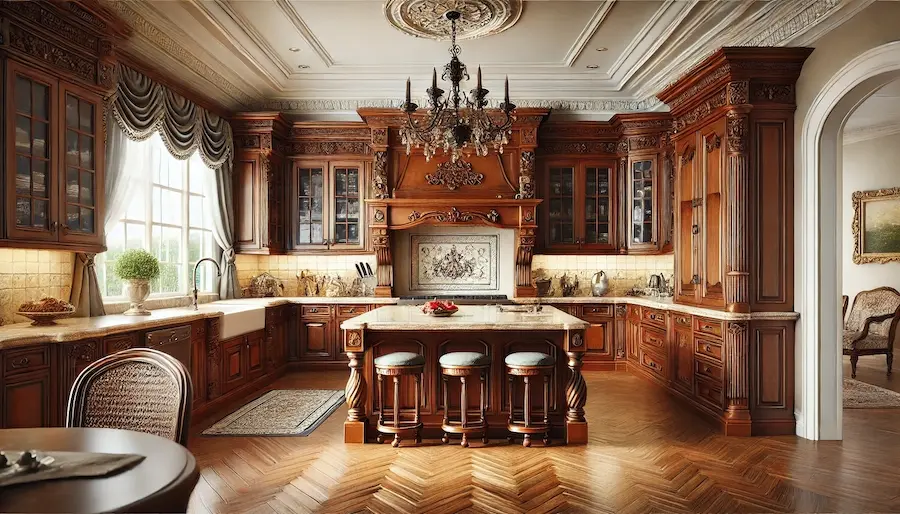A traditional kitchen design exudes timeless elegance, characterized by classic architectural details, rich finishes, and a warm, inviting atmosphere. This article explores the history, key features, applications, and considerations for creating a traditional kitchen.
History and Origins of Traditional Kitchens
The evolution of traditional kitchens reflects a journey from utilitarian spaces to the heart of the home. In the late 19th and early 20th centuries, kitchens were primarily functional areas, often separated from living spaces. However, as technological advancements introduced modern appliances and indoor plumbing, kitchens began to integrate more into the home’s social fabric. Design elements from Georgian, Victorian, and Colonial styles influenced traditional kitchen aesthetics, incorporating intricate woodwork, classic cabinetry, and elegant fixtures.
Key Features of Traditional Kitchens
- Detailed Cabinetry: Raised-panel or recessed-panel cabinets with decorative moldings and finishes.
- Natural Materials: Use of high-quality woods, stone countertops, and tiled backsplashes.
- Neutral Color Palette: Soft whites, creams, and muted tones create a warm and inviting atmosphere.
- Ornate Hardware: Antique-style knobs and pulls in brass or bronze finishes.
- Classic Lighting: Chandeliers, pendant lights, and sconces with traditional designs.
Applications of Traditional Kitchens
- Residential Homes: Ideal for homeowners seeking a timeless and elegant kitchen space.
- Historic Renovations: Suitable for restoring period homes to their original grandeur.
- Luxury Interiors: Complement high-end design schemes with rich materials and detailed craftsmanship.
Considerations When Designing a Traditional Kitchen
- Space Planning: Ensure the layout promotes functionality while maintaining classic design principles.
- Material Selection: Choose durable, high-quality materials that reflect traditional aesthetics.
- Cohesive Design: Maintain consistency in architectural details, finishes, and color schemes.
- Modern Conveniences: Integrate contemporary appliances subtly to preserve the traditional look.
Conclusion
Traditional kitchens offer a timeless appeal, combining classic design elements with modern functionality. By focusing on detailed craftsmanship, quality materials, and thoughtful design, you can create a kitchen that exudes elegance and warmth, serving as the heart of your home.
